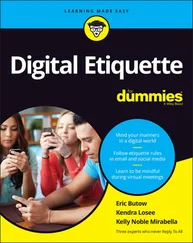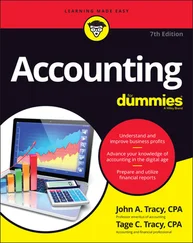Kenneth W. Boyd - Cost Accounting For Dummies
Здесь есть возможность читать онлайн «Kenneth W. Boyd - Cost Accounting For Dummies» — ознакомительный отрывок электронной книги совершенно бесплатно, а после прочтения отрывка купить полную версию. В некоторых случаях можно слушать аудио, скачать через торрент в формате fb2 и присутствует краткое содержание. Жанр: unrecognised, на английском языке. Описание произведения, (предисловие) а так же отзывы посетителей доступны на портале библиотеки ЛибКат.
- Название:Cost Accounting For Dummies
- Автор:
- Жанр:
- Год:неизвестен
- ISBN:нет данных
- Рейтинг книги:4 / 5. Голосов: 1
-
Избранное:Добавить в избранное
- Отзывы:
-
Ваша оценка:
- 80
- 1
- 2
- 3
- 4
- 5
Cost Accounting For Dummies: краткое содержание, описание и аннотация
Предлагаем к чтению аннотацию, описание, краткое содержание или предисловие (зависит от того, что написал сам автор книги «Cost Accounting For Dummies»). Если вы не нашли необходимую информацию о книге — напишите в комментариях, мы постараемся отыскать её.
Cost Accounting For Dummies
Cost Accounting For Dummies
Cost Accounting For Dummies — читать онлайн ознакомительный отрывок
Ниже представлен текст книги, разбитый по страницам. Система сохранения места последней прочитанной страницы, позволяет с удобством читать онлайн бесплатно книгу «Cost Accounting For Dummies», без необходимости каждый раз заново искать на чём Вы остановились. Поставьте закладку, и сможете в любой момент перейти на страницу, на которой закончили чтение.
Интервал:
Закладка:
 A cost driver is an item that changes the total costs. If you drive the trucks more, they require more repair and maintenance. An activity (driving to see customers) drives up your costs (repair and maintenance).
A cost driver is an item that changes the total costs. If you drive the trucks more, they require more repair and maintenance. An activity (driving to see customers) drives up your costs (repair and maintenance).
Just to clarify: The cost object is the “sponge” that absorbs the cost. The cost driver adds to the size of the sponge. A bigger sponge absorbs more cost.
Assume the total repair and maintenance expense for three carpentry trucks is $3,000. During the month, your workers provide service to 300 clients. Each customer is allocated $10 of repair and maintenance expense ($3,000 ÷ 300 clients).
If the cost driver increased to 400 clients per month, the carpenters would drive more miles. As a result, the trucks would require more maintenance and possibly repairs. Your monthly repair and maintenance expense would be higher.
At 400 customers for the month, assume total repair and maintenance expense for three carpentry trucks is $3,600. Now each customer is allocated repair expense of $9 ($3,600 ÷ 400 clients). The cost driver increase (number of customers) changed your total cost to $3,600. Because you also have an increase in total customers (400), the $3,600 is spread over a larger group. The total cost increased, but the cost allocated per customer declined.
You can see how the cost allocation process can get complicated.
It’s often beneficial to group similar costs together into the same cost pool when the cost driver is the same. Consider a cost pool for the indirect costs for the carpentry trucks. In addition to repair and maintenance expense, the company pays for insurance and depreciation on the three trucks. None of these costs can be traced to a specific customer; instead, you need to allocate these costs. A good cost pool would include depreciation, insurance, and repair costs on the trucks. This cost pool can be allocated just like the repair and maintenance in the previous example.
Implementing job costing in manufacturing: An example
To implement job costing in a manufacturing company, first think about dividing your costs into two piles: direct costs and indirect costs. In a manufacturing setting, you have direct materials and direct labor you can trace directly to the job. So far, so good. Next, think about what’s driving indirect costs. You spread those indirect costs to the work you perform.
As an example, Reliable Fencing manufactures and installs wooden fences for the residential market. Reliable has a manufacturing component and a service component.
Reliable provides the customer a cost estimate. The estimate is based on the type of fence, fence height and length, and labor hours needed for installation. Because nearly every job has a different set of costs, Reliable Fencing uses job costing. This system allows Reliable to compute costs accurately. And from that, Reliable can calculate a selling price that generates a reasonable profit.
Imagine that you’re the manager of Reliable Fencing. The Johnsons have requested an estimate for a fence in their backyard. To provide the estimate, you discuss the fence models and types with them. You measure the length needed for the fence and the height requested. Finally, you consider any extra labor costs you might incur. For example, the Johnsons would like the fence to jog around several trees so the fence doesn’t damage the tree trunks.
The Johnsons’ fence is the cost object. Reliable will incur costs if the client orders a fence and work starts on the project. But before getting an order, you have to provide a cost estimate.
Computing direct costs
Reliable combines the cost of wood, paint, and a waterproofing treatment for the wood. That combined cost represents direct materials. As the manager, you compute direct material costs:
Direct materials = quantity of materials × unit price paid for material
You buy material measured in square feet. The unit cost is the price per square foot (see Chapter 2). Here’s the amount of material needed and the cost:
Direct materials = 600 square feet of material needed × $5 per square foot
Direct materials = $3,000
Your other direct cost is direct labor. Your staff must cut the wood, paint it, waterproof it, and build the fence. Thinking through it further, your staff must measure and dig postholes. They then fill the area around the posts and nail the fence boards onto the posts, all while keeping everything level. Not easy! It takes real skill and planning. As a result, the owners of Reliable Fencing know it’s best to hire skilled people and pay them a reasonable hourly rate.
Your experience as Reliable’s manager allows you to estimate the labor time needed, based on several factors. You consider the square footage of material needed; the length and height of the fence; and any extra work, such as going around those tree trunks. Here’s your formula for direct labor costs:
Direct labor = hours of labor × rate paid for labor
 Note a difference in terms: Price is used for materials, and rate is the term used for labor. That distinction comes up in the world of cost variances.
Note a difference in terms: Price is used for materials, and rate is the term used for labor. That distinction comes up in the world of cost variances.
You estimate that 2 people working 20 hours can complete the job. Using these numbers, you determine the labor cost:
Direct labor = hours of labor × hourly rate paid for labor
Direct labor = 2 workers × 20 hours × $20
Direct labor = $800
Consider one more direct cost. You saw a discussion of mileage expense earlier in the chapter. I’ll dust off that formula again and use it here:
Cost per mile = cost per gallon of gas ÷ miles per gallon for the vehicle
Mileage costs = miles needed for client × cost per mile
You calculate 15 miles (round trip) from your office to the job site. However, the work will be completed over several days. You estimate 45 total miles.
Your trucks get 20 miles to the gallon, and your fuel cost is $4 per gallon. It’s not much, but here is the direct cost for mileage:
Cost per mile = $4 gallon of gas / 20 miles per gallon
Cost per mile = 20 cents per mile
Mileage costs = 45 miles needed for client × 20 cents per mile
Mileage costs = $9.00
So you have three direct costs: materials, labor, and mileage. They are direct costs because they can be traced to the cost object: the Johnsons’ fence.
Calculating indirect costs
To allocate indirect costs, you decide on two cost pools. One pool is your vehicle and equipment costs, and includes depreciation, maintenance, repair, and insurance costs. The other pool is office cost, which includes salary, benefits, accounting costs, and legal costs for your company. The cost object for allocating these indirect costs is the customer base:
| Vehicle and equipment costs | $4,000 |
| Office cost | $7,000 |
| Customers serviced | 200 |
After you resolve how to allocate costs, try to keep it simple. You combine the indirect costs into one amount ($4,000 + $7,000 = $11,000). You then divide the indirect cost total by the number of clients for the month:
Indirect cost allocation rate = $11,000 ÷ 200 customers = $55 per customer
Indirect cost allocation rate = $55 per customer
Your office assistant asks a question: “Is that really fair? What if one client has a $3,000 job, and another’s project is only $500? Should we be charging the same amount of costs to both?” You think about the issue over lunch.
Читать дальшеИнтервал:
Закладка:
Похожие книги на «Cost Accounting For Dummies»
Представляем Вашему вниманию похожие книги на «Cost Accounting For Dummies» списком для выбора. Мы отобрали схожую по названию и смыслу литературу в надежде предоставить читателям больше вариантов отыскать новые, интересные, ещё непрочитанные произведения.
Обсуждение, отзывы о книге «Cost Accounting For Dummies» и просто собственные мнения читателей. Оставьте ваши комментарии, напишите, что Вы думаете о произведении, его смысле или главных героях. Укажите что конкретно понравилось, а что нет, и почему Вы так считаете.












